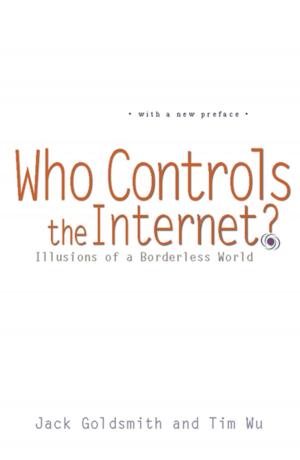| Author: | Kathryn S. Olmsted | ISBN: | 9780195183535 |
| Publisher: | Oxford University Press, USA | Publication: | December 15, 2009 |
| Imprint: | Language: | English |
| Author: | Kathryn S. Olmsted |
| ISBN: | 9780195183535 |
| Publisher: | Oxford University Press, USA |
| Publication: | December 15, 2009 |
| Imprint: | |
| Language: | English |
Many Americans believe that their own government is guilty of shocking crimes. Government agents shot the president. They faked the moon landing. They stood by and allowed the murders of 2,400 servicemen in Hawaii--or 3,000 civilians in New York. In their zeal to cover up their crimes, they killed witnesses, faked evidence, and stole into secure offices to snatch incriminating documents from the files. Although the paranoid style has been a feature of the American scene since the birth of the Republic, in Real Enemies Kathryn Olmsted shows that it is only in the twentieth century that strange and unlikely conspiracy theories have become central to American politics. While Americans had worried about bankers, Jews, and Catholics for decades, Olmsted sees World War I as a critical turning point for conspiracy theories. As the federal government expanded, Americans grew more fearful of the government itself--the military, the intelligence community, and even the President. Perhaps more important, Olmsted examines why so many Americans believe that their government conspires against them, why more people believe these theories over time, and how real conspiracies by government officials--such as the infamous Northwoods plan--have fueled our paranoia about the government. She analyzes Pearl Harbor, Cold War and anticommunist plots, the JFK assassination, Watergate, and 9/11. Along the way, she introduces readers to a lively cast of characters, from the Nobel prize-winning scientist who became a leading conspiracist to a housewife who believed she could unlock the secrets of the JFK assassination. Polls show that thirty-six percent of Americans think that George W. Bush knew in advance of the 9/11 terrorist attacks. Real Enemies, an engaging work on a timely, important topic, sheds light on such theories, revealing how the rampant fear of conspiracy at once invigorates and undermines American democracy.
Many Americans believe that their own government is guilty of shocking crimes. Government agents shot the president. They faked the moon landing. They stood by and allowed the murders of 2,400 servicemen in Hawaii--or 3,000 civilians in New York. In their zeal to cover up their crimes, they killed witnesses, faked evidence, and stole into secure offices to snatch incriminating documents from the files. Although the paranoid style has been a feature of the American scene since the birth of the Republic, in Real Enemies Kathryn Olmsted shows that it is only in the twentieth century that strange and unlikely conspiracy theories have become central to American politics. While Americans had worried about bankers, Jews, and Catholics for decades, Olmsted sees World War I as a critical turning point for conspiracy theories. As the federal government expanded, Americans grew more fearful of the government itself--the military, the intelligence community, and even the President. Perhaps more important, Olmsted examines why so many Americans believe that their government conspires against them, why more people believe these theories over time, and how real conspiracies by government officials--such as the infamous Northwoods plan--have fueled our paranoia about the government. She analyzes Pearl Harbor, Cold War and anticommunist plots, the JFK assassination, Watergate, and 9/11. Along the way, she introduces readers to a lively cast of characters, from the Nobel prize-winning scientist who became a leading conspiracist to a housewife who believed she could unlock the secrets of the JFK assassination. Polls show that thirty-six percent of Americans think that George W. Bush knew in advance of the 9/11 terrorist attacks. Real Enemies, an engaging work on a timely, important topic, sheds light on such theories, revealing how the rampant fear of conspiracy at once invigorates and undermines American democracy.















